#luàna bajrami
Photo
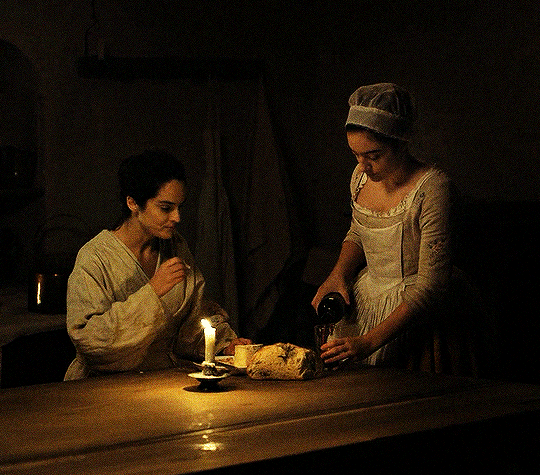
Portrait de la jeune fille en feu
#Portrait de la jeune fille en feu#Céline Sciamma#Noémie Merlant#Luàna Bajrami#bread#cheese#wine#red wine#movie#film
103 notes
·
View notes
Text
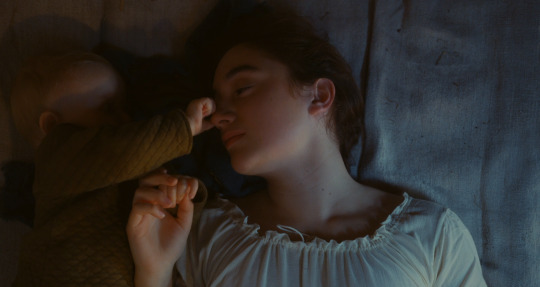
Portrait de la Jeune Fille en Feu
#luàna bajrami#mine#screens#portrait of a lady on fire#Portrait de la Jeune Fille en Feu#Adèle Haenel#Héloïse#Marianne#Noémie Merlant#Céline Sciamma#heloise and marianne#marianne and heloise#page 28#28#book#poalof#pdljfef#marianne x heloise#heloise x marianne#french#cinema#movie#movies#film#films#love#in love#kiss#kissing#wlw
13 notes
·
View notes
Text

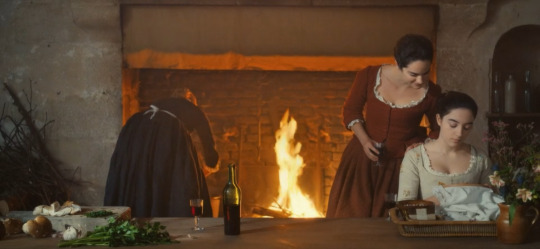

Portrait of a Lady on Fire (2019) dir. Céline Sciamma
#portrait of a lady on fire#film#cinematography#cinema#french cinema#céline sciamma#adèle haenel#noémie merlant#luàna bajrami#claire mathon#portrait de la jeune fille en feu#romance#film stills
31 notes
·
View notes
Text
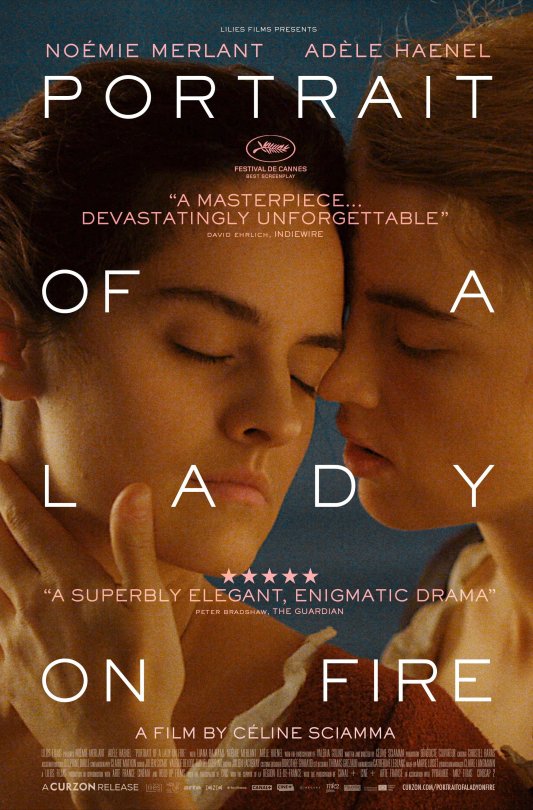


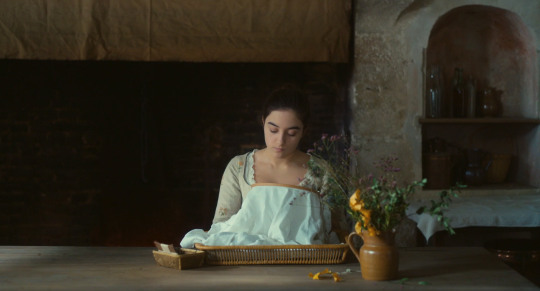


Portrait of a Lady on Fire (Portrait de la jeune fille en feu) (2019) Céline Sciamma
January 14th 2024
#portrait of a lady on fire#Portrait de la jeune fille en feu#2019#céline sciamma#noémie merlant#adèle haenel#Luàna Bajrami#valeria golino#favourite
7 notes
·
View notes
Text

Cinediario 2022 - giugno
The Hill Where Lionesses Roar (2021) Luàna Bajrami
28 notes
·
View notes
Photo

Luàna Bajrami by François Berthier
12 notes
·
View notes
Text
Happening

Happening [trailer]
Follows a bright young student who faces an unwanted pregnancy while abortion was still illegal in 1960s France.
A very timely movie. More than 50 years later the story sadly can be seen as a documentary in parts of the US. It's impossible to watch the movie without thinking of what the religious extremists in the US (and also parts of Europe) want women to go through.
#Happening#L'événement#Audrey Diwan#Annie Ernaux#Anamaria Vartolomei#Kacey Mottet Klein#Luàna Bajrami#Pio Marmaï#Sandrine Bonnaire#Anna Mouglalis#foreign#France#recommended
3 notes
·
View notes
Text
Une année difficile (2023)
Une année difficile (2023)
#OlivierNakache #EricToledano #MathieuAmalric #LuanaBajrami #JonathanCohen #JamesGasparDeAlmeida
Mehr auf:
A Difficult Year / Black Friday For FutureJahr: 2023 (Oktober)
Genre: Comedy
Regie: Olivier Nakache, Éric Toledano
Hauptrollen: Mathieu Amalric, Luàna Bajrami, Jonathan Cohen, James Gaspar De Almeida, Jean-Louis Garçon, Grégoire Leprince-Ringuet, Pio Marmaï, Noémie Merlant, Héléna Mogelan, Marie Papillon, Sophie Parel, Julie Tessier, Gaïa Warnant …
Filmbeschreibung: Albert (Pio Marmaï) und…

View On WordPress
0 notes
Text
An adaptation of Annie Ernaux's novel of the same name, looking back on her experience with abortion when it was still illegal in France in the 1960s.
winner of Venice's Golden Lion & FIPRESCI prize.
0 notes
Photo

Happening (L'Événement, dir. Audrey Diwan).
It’s a masterfully claustrophobic depiction of all too very real events made to both be as universal as possible while keying in specific details and graphic imagery to show us where we were as a society and what might come as a result. Happening is an utterly harrowing cautionary tale of desperation about a young woman trying to save her own life by risking it and needlessly endangering herself because of her familiar circumstances.
#happening#happening movie#l'événement#audrey diwan#happening film#anamaria vartolomei#french film#french cinema#cinema#movie#movies#movie review#film#film review#annie ernaux#événemen#luàna bajrami#luana bajrami#ifc films
1 note
·
View note
Text
目を逸らさずに、立ち向かえ
L'événement @ Rectangle Productions 他
Directed by Audrey Diwan
執拗に観客を主人公と同化させようと試みる作品というものがある。やり方を間違えると白けるだけだが、本作は難なく成功している。スタンダードサイズの画面、彼女を追って周りがボケているピントの合わせ方。これら技術的な面も手伝っていることも確かだが、何よりとある「病気」が自分の身に降りかかるという状況が有無を言わせず全ての人間に当事者意識を植え付ける。彼女のバックグラウンドや、選択、考え方、仕草を気に入る気に入らないといった、通常主人公を批判的に見る隙を観客に与えることはない。観客は始めから彼女の肉体に囚われ、逃げることができない。
病気と書いたが、それは主人公が言うところの「女だけがかかる病気」「主婦になるという病」、すなわち妊娠である。大学生の主人公 Anamaria Vartolomei は予期せぬ妊娠に直面し、これでは文学あるいは国語の教師になりたいという夢を諦めなければならなず、自分の人生を捨てなければならない危機に見舞われる。しかし 1963年当時フランスでは中絶は違法であり、彼女を助けることができる真っ当な方法は存在しない。彼女は、アンダーグラウンドの中絶手術を求めることとなる。
冒頭の授業で詩の授業が行われている。読まれているのは戦争を描いた Louis Aragon の詩 « Elsa au miroir » である。
教授が Vartolomei に質問する。「この手法をなんと言いますか?」 « Une Anaphore » 「首句反復」と答える彼女。単語の響き、アンシェヌマン(フランス語の発音ルール)が起きてこう聞こえる。 « Une Nana Forte » 「強い女」。戦争に巻き込まれる強い女とは何者か?
それは、一つに原作者の Annie Ernaux のことである。彼女の実体験を映画化した本作は、壮絶で孤独な戦いに身を投じる若い女性を描く。私はカメラワークが László Nemes の 「サウルの息子」や「サンセット」といった作品のようだと感じたが、戦禍の中、主人公がどこにピントを合わせて世の中を見ているかという点さえも観客に主人公との同化を強いる意味では当然の選択だったのだろう。観客は、彼女が見ていないものは知るよしもないが、逆に彼女が見ているものは全てくっきり見せつけられる。さらに、サスペンス的要素もこの作品の危機感をドライブする。3週、7週などとカウントアップされていくクレジットは焦燥感を煽り、観ている側もパニックに襲われそうになるのだ。戦争、病気といった非日常に突入したことによって、もはや自分にとって時間の数え方が変わってしまう。しかしこれはある意味、妊娠という状況でなくとも男女の大きな違いかもしれない。28という数字を聞いて、男はなんのことだろうと首を傾げるなどよくある話だ。
さて、妊娠が分かったヒロインだが60年代フランスにおいて人工妊娠中絶はいかにタブーであったかを思い知らされる場面が次々と出現する。まず、医者が「生理が来るように」無言で処方した薬は精力剤で胎児を元気付けるものだったという騙し討ち。あるいは、女友達は雑談の中で子供を堕すことを「冗談でも言わないで」と真顔で言う。当然の成り行きで、打ち明けた途端に巻き込まないでほしいと友人関係も疎遠になる。時間が経ってから、仲良し三人組の一人だった Luàna Bajrami が私は欲望のままに男と遊んだけれど、妊娠しなかったのは運が良かっただけど心の中を Vartolomei に打ち明けて歩み寄るシーンがあるが、 « Portrait de la Jeune Fille en Feu » で彼女は周りの登場人物にあんなに堕胎に協力してもらってたのに、本作での主人公への仕打ちはあまりじゃないか!と突っ込んだ。笑
追い詰められた彼女に手を貸したのは、悪い遊びを知っている男友達 Kacey Mottet Klein 。「経験がある」という学生 Alice de Lencquesaing にアンダーグラウンドで手術を請け負う Sandrine Bonnaire を紹介される。 Alice は告げる。手術のあと医者が「流産」と書くか「中絶」と書くかは運次第。後者ならみんな-妊婦、手術した人、協力者-刑務所行きだと。手術費用は400フラン。Vartolomei は大事な蔵書を売って金を工面する。そこで売られているのは Simone de Beauvoir や 冒頭の Aragon の著作。自由やそれを奪う戦争について彼女がいかに考えを巡らせているかを垣間見せる一場面だ。ちなみに、フランスは1789年の革命の頃まで中絶は合法だった。それが禁止されたのは1810年から。理由は、 Napoléon Bonaparte による戦争。国民全員が何らかの形で戦争に関わることになる近代国家にとって、人口の量と質の管理は至上命題であり、子供を勝手に堕ろされては政府にとって不都合だったのである。
クライマックスとなる堕胎の場面は、 Bonnaire の自宅へ足を踏み入れてから手術完了まで長尺のワンショットで見せる。ショットを映画における瞬きとするならば、ここは瞬きなしの一呼吸だ。一度目の手術では胎児は持ち堪えて失敗。もういちどと Bonnaire を説得し行った2回目では成功。彼女は大学の寮に戻ってから激痛に耐えた末、トイレで亡骸を産み落とす。この場面では便座に座る彼女を正面からカメラが捉えているのだが、ほんの少し下へ向けられる瞬間がある。そこには血だらけの肉塊が臍の緒一本で Vartolomei と繋がっている姿が映される。女性は血と肉、すなわち命をかけて妊娠をするものなのだという事実を観客に見せる姿勢に容赦はない。それが本作の映画化にあたり、考えられうる限り最大の誠実さを証明していることは言うまでもない。
最後には世間が行う時間の捉え方7月5日の文学の試験で幕を閉じる。試験前に教授が引用するのは Victor Hugo の言葉だ。その内容も顔を上げて、旗を掲げて歩めという戦争もの。若者たちよ、強い女性たちよ、歩き闘い続けよというメッセージが込められていた。
なお、この闘いは現在も進行中である。法律は変えられる恐れがあるからとフランスでは先月24日、憲法に中絶へのアクセス権を明記する憲法改正案が国民議会で可決されたばかりだ。右派が過半数を取る上院での可決は難しいらしいが、 US の動向に対する反動としても議論は続いていくだろう。最後に余談だが、成績が下がってきたヒロインに対し教授が冷たい態度をとったせいで Vartolomei ならぬ Ernaux は教師になんかならず作家になりたいと思ったのではないだろうか。であるならば、 Nobel 賞作家の第一歩を歩ませたという意味で彼はグッジョブだ。笑
2 notes
·
View notes
Photo

Portrait de la jeune fille en feu
#Portrait de la jeune fille en feu#Céline Sciamma#Adèle Haenel#Noémie Merlant#Luàna Bajrami#mushrooms#red wine#wine#movie#film
85 notes
·
View notes
Text
Film Journal
“The Hill Where Lionesses Roar“ by Luàna Bajrami

2 notes
·
View notes
Note
what's wrong with portrait of a woman on fire?
I mean, I don't know if there's anything *wrong* with it, just like I'm not sure that there's anything *wrong* with the 2005 Pride and Prejudice (my beloathed) or Outlander (ditto) or The Favourite (etc.) These are films that have accumulated a large audience, clearly they WORKED for some people, they just didn't work for me. Our visions clashed, it happens.
But, as for why I have it blacklisted, the short answer: I didn't want to see it on my dash.
The longer answer: It's from my least favorite genre of film, the one genre of film that I can never forgive for existing, the one genre of film that actively makes me want to tear my own eyeballs out and set them on fire. Slasher films? Don't like the gorefest, but at least you get some classic monster designs, and at least I can say Psycho II pissed me off enough for me to draft out a fix-it fanfic for it once (yes, really). Actions films starring a bunch of identical guys in not-so-subtle military propaganda? Don't LIKE it, but it's white noise. Like, if nothing else, you can drift away and not miss anything.
No, my one arch enemy, the bane of my existence...
Arthouse films.
Aka "films designed purely so that the overwhelmingly middle class audience can pat themselves on the head for being Artistic and Cultured, while not being a particularly enjoyable or pleasant experience for literally anyone else but the sort of person who prides themselves on watching arthouse films."
I hate it. I hate it.
I hate arthouse films with a fiery, burning passion.
(And, before anyone accuses me of anything so heinous as being a mcu stan: I'm going to point out that it's possible to create something that asks questions about the world, that makes commentary, while still being an enjoyable experience.)
Now, as for the film itself: I don't like the thesis of it. I don't like Schiamma's vision. I wouldn't say it's a shitty vision, but it isn't mine. It's this bougie, white sort of feminism that says that, essentially, if you take away the patriarchy, if you take away the men, there's this wonderful world that opens up where all these other things -- race, class, etc. fall away and are replaced by this wonderful collaborative world.
From the interview in the Independent:
“I wanted to use the tools of cinema so you would feel patriarchy without actually having to embody it with an antagonist,” says Sciamma. Free from the gaze of men, Marianne, Héloïse, and the servant Sophie (Luàna Bajrami) are in a sort of utopia. There, the women and their love can briefly flourish. “When a man comes back in the frame,” smiles Sciamma, “it’s a jump scare.”
In the Vox interview:
"For instance, ask yourself the question of “how do you embody sorority?” The answer being, a long take, a wide shot, of three women in the kitchen with social hierarchy being totally turned around, with the aristocratic women cooking, whereas the maid is an artist and the artist is looking at the maid. And they’re silent. This is such a powerful image, and it’s so easy to make.
People are telling me, “Oh, your film is a utopia.” And I’m like, “Yeah, but our utopias are not ideas we have in our minds. They’re not things we wish we were living. They’re rooted in our own experience.” I know about sorority, I know about an all-women world. It’s not a utopia. It’s part of my life. And that’s what I rely on to make these images."
And again, I want to emphasize that I'm not saying that sorority DOESN'T exist, I'm not as cynical about sorority as she is about love, but I do believe in sorority in the same way as I believe in "collegiality" -- that they are both very convenient terms that are often used to ignore the very real structural imbalances that many women do profit from and are generally incredibly one sided. I have never really had the same luxury of that sorority that she talks about, not because I'm a woman of color, but because I grew up poor and incredibly autistic in a small, restrictive community. Some of the best people in my life have been and continue to be women, but also some of the worst terrorizers in my life have been women. I don't believe in her Utopia, it has no appeal to me, I don't buy it.
Likewise, with it's ending, we have Sciamma, very insistently, talking about the necessity of it (from the Vulture interview):
The question we have from the old culture, and the old world, is, like, “Why do they not end up together?” And I’m like, no, this is not respecting the lives of these women. To make them even think, maybe we could escape. Once you actually play with the idea of this conflict and this resolution — that’s why sometimes they make people die [in period movies]. That’s why there was no room on that door for Jack. Because otherwise they would have to put up with that. Nobody’s gonna die in our movie, but we have to respect the fact that it’s not possible [for them to be together]. It’s a new kind of story.
How would it not "respect the lives" of the (fictional) women for them to not end up together? Why would it not be possible? This is a common refrain I've seen about it, including in Veronica Esposito's article, where she says:
"But what, really, does change? Yes, Marianne and Héloise get to express themselves, they get to know the pleasure of each other's bodies, but they will never be partners living together in a real relationship. Such a thing is not possible in their time, for society has no place for women like them. Accordingly, these women never evidence even the smallest idea of what life would be like if they were free to remain together. The circumstances of the world in which they live would prevent their imaginations from conceiving of such an impossible thing."
It ignores that, for a number of queer women of that era, it was incredibly possible to balance both a marriage and an affair, especially since it was set in the 1770s, before there was a widespread societal suspicion around romantic friendships (that came with the collapse of Marie Antoinette's reputation via the libelles). There would be nothing UNUSUAL about two women having a close companionship. But it ends, why? Because it has to. For all that Schiamma emphasizes that this is a new type of film, it plays into some old preconceptions about queer women throughout history.
She also shows it, again, in the vox interview:
"Héloïse’s character is much more restrained, even though she is an aristocratic woman, than Marianne’s character. The tragedy of lesbian life is not the tragedy of lesbian representation. It’s not the same. Lesbians have been activists. They’ve had the opportunity to live their life more freely sometimes, than straight women, because they could avoid a lot of things, like getting married and having children."
I don't understand exactly what her vision is for pre-20th century lesbians, given that we SEE Héloise being married off. Is it that lesbians could magically avoid the patriarchy, or is it that they were forever trapped by it, doomed to never have a fulfilling connection again, pining for their lost love? I'm very confused on this point, honestly.
I would also note Andrew Young's letter to The Times' Literary Supplement:
Perhaps it is possible to sympathize with much of Muriel Zagha's review (Arts, March 6) of Portrait of a Lady on Fire, and indeed with the film, while retaining a serious reservation. Gourenez Kiberen (Presqu'île de Quiberon) is not an island (contrary to the review's repeated suggestion) and, in 1770, the language we would have heard spoken there by nearly all of the characters other than the two principals and Héloïse's mother would have been Breton, not French (or, if French, then in a manner quite missing from the film). If this is an egalitarian link across time to the eighteenth century, it is one in which linguistic and cultural equality has been thoroughly buried - as it continues to be - by filmmakers and audiences alike.
This is obviously very near and dear to my heart, but I do not understand how you can just...use Brittany as pretty window dressing while ignoring the Breton people and the Breton language (except for when you want to show something #Pagan or #Rustic.
Not even the bonfire song was in Brezhoneg:
“I wrote the lyrics in Latin. They’re saying, ‘fugere non possum,’ which means ‘they come fly,'” said Sciamma. “It’s an adaptation of a sentence by [Friedrich] Nietzsche, who says basically, ‘The higher we soar, the smaller we appear to those who cannot fly.'”
...
"It was a way to also convoke the imagery [of] witches,” said Sciamma. “In the meantime saying, ‘Well, you know, it’s just women gathering, living their friendship, exchanging knowledge, wise women, doctors, whatever, and, you know, drinking. It’s cold, so there’s a fire, and they might do drugs, you know, they fly. We wanted to convoke the imagery around witches.”
This was the 1770s, the Revolution hadn't yet come to try to erase Brezhoneg off the map. The Breton language is still under attack, it is still under threat. She is a Frenchwoman using Brittany as a nice, isolated set for her love story but not doing the basics of respecting the culture.
"Should the entire film have been in Brezhoneg?"
Unironically, yes. Then it could have actually lived up to its hype of doing something new. If I could wait for five years to write a fic set in Brittany in the 1790s because I knew I didn't have the cultural or linguistic background for it, a filmmaker with much more resources and material, who actually IS French and therefore has easier access to French-language materials on Breton, could have bothered to do the research. Especially since the suppression of the Breton language is being done. By the French. And has been done. By the French.
For someone who is making a big deal about changing the world (and, God, I'm not going to lie, she sounds like that one person in your friend group who self-identifies as an auteur and refuses to read a single thing you've written while guilt-tripping you into reading their three hundred page novel that they swear is going to be the next big thing. Like, that's ad hominem, but...it's the truth), she clings onto some old, old cliches.
So, is it harmful? I don't think so, no. Is it bad? I don't know.
It's just personally obnoxious.
6 notes
·
View notes
Text
ENSEMBLE
Shortlisted: After Yang, Bones and All, No Bears, Women Talking
THE NOMINEES ARE:

BENEDICTION
Starring: Jack Lowden, Peter Capaldi, Simon Russell Beale, Jeremy Irvine, Kate Phillips, Gemma Jones, Ben Daniels, Calam Lynch, Anton Lesser, Tom Blyth, Matthew Tennyson, Geraldine James, Richard Goulding, Lia Williams, Suzanne Bertish, Julian Sands, Jude Akuwudike, Giovanna Ria
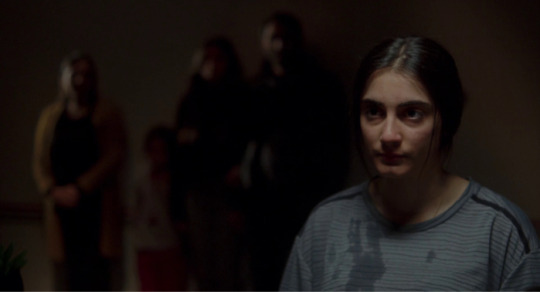
A CHIARA
Starring: Swamy Rotolo, Claudio Rotolo, Grecia Rotolo, Carmela Fumo, Giorgia Rotolo, Antonio Rotolo, Vincenzo Rotolo, Antonina Fumo, Giusi D'Uscio, Patrizia Amato, Concetta Grillo, Koudous Seihon, Pio Amato, Iolanda Amato

HAPPENING
Starring: Anamaria Vartolomei, Kacey Mottet Klein, Sandrine Bonnaire, Louise Orry-Diquero, Louise Chevillotte, Pio Marmaï, Anna Mouglalis, Fabrizio Rongione, Luàna Bajrami, Leonor Oberson, Julien Frison, Alice de Lencquesaing
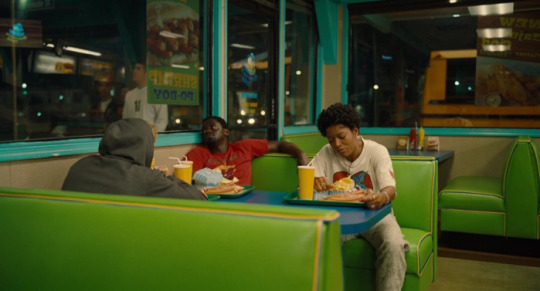
NOPE
Starring: Daniel Kaluuya, Keke Palmer, Steven Yeun, Jacob Kim, Michael Wincott, Brandon Perea, Wrenn Schmidt, Barbie Ferreira, Terry Notary, Devon Graye, Donna Mills, Osgood Perkins, Eddie Jemison, Keith David, Sophia Coto, Haley Babula, Jennifer Lafleur, Andrew Patrick Ralston
AND THE CRISTAL GOES TO...
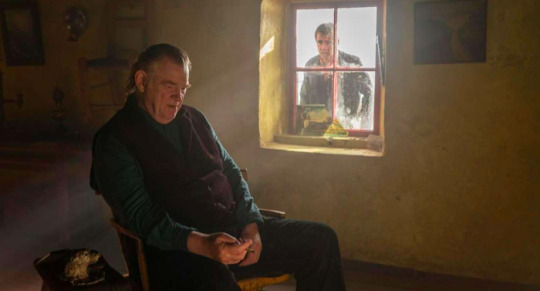
THE BANSHEES OF INISHERIN
Starring: Colin Farrell, Brendan Gleeson, Kerry Condon, Barry Keoghan, Gary Lydon, Pat Shortt, Sheila Flitton, Bríd Ní Neachtain, Jon Kenny, Aaron Monaghan, David Pearse, Lasairfhíona Ní Chonaola, John Carty
#2022 Film Awards#Best Ensemble#The Banshees of Inisherin#Benediction#A Chiara#Happening#L'Événement#Nope
0 notes
Text
Portrait of a Lady on Fire (2019)
Directed by Céline Sciamma
Cinematography by Claire Mathon
Starring Noémie Merlant, Adèle Haenel and Luàna Bajrami




"In solitude, I felt the liberty you spoke of. But I also felt your absence."
1 note
·
View note